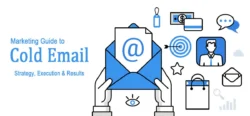Despite all the time and money invested in sales compensation planning, sometimes programs fail to drive business results. Misguided goals, benefits, and communications are just a few of the mistakes that can make your sales incentive program less effective than intended.
Consider your entire channel when planning your program. Don’t overlook service teams and client account teams who may also be eligible to participate.
1. Misaligned Goals
Incentives that aren’t carefully aligned with key business objectives and sales goals can derail your program. The goal of your sales incentive program should be to entice channel partners to engage in behaviors that will drive the right results so you have a shot at achieving your overall business goals.
For example, let’s say your company wants to generate more high-quality leads and help salespeople close their deals faster. To do that, you’ll need to ensure your marketing and sales teams are aligned in terms of goals, roles, and scope. Misalignment between these departments can negatively impact revenue growth, profitability, and customer satisfaction.
To avoid this pitfall, bring both sides of the table to your compensation planning team to make sure that incentives are designed with business objectives in mind. You’ll also want to make it clear to channel partners how their behavior will affect those business objectives and reward them accordingly.
Many companies fall into the trap of only rewarding or punishing their partners based on short-term performance, like increased or decreased sales. This approach can result in a lack of trust, unethical behavior, and missed opportunities for long-term success. Fortunately, it is possible to correct this misguided thinking and put longer-term success in mind by altering the contracts with your supply chain partners.
One way to do this is by making it mandatory that every participant must complete a product training course before they can participate in your sales incentive program. This will help them understand how your product fits in with their customers’ needs and create a more customer-centric approach to selling. Then you can offer noncash rewards (like merchandise, travel, or experiences) that will resonate with your sales team and have a higher perceived value than cash.
2. All Carrot and No Stick
Using the carrot and stick approach to motivate staff is an effective way to get results, but only if it’s well-balanced. If too much emphasis is placed on providing rewards and penalties that are tied to achieving specific goals, then it’s likely that an employee will feel overly stressed and begin to lose motivation over time.
Essentially, when an employee has to choose between their own personal well-being and the benefit of the organization, they will act to maximize their own benefits. The reward system entices them to align their interests with those of the company, while punishments deter them from activities not in their best interest.
A common mistake is to place too much emphasis on the carrot and ignore the stick when it comes to sales incentive strategies. This can cause your employees to feel overly pressured and begin to push the limits of ethical behavior. Rather than pushing the limit of what’s acceptable, use your negotiating skills to come up with alternatives that are less stressful and more productive for everyone involved.
Carrots can be anything from business perks to cash bonuses and salary raises, but it’s important to keep in mind that your employee may prefer something other than financial incentives. For example, if your company values health and wellness, you might consider offering them a free gym membership or spa day as a way to encourage positive behaviors.
Jeffrey suggests you spend one week in each of your current customers’ businesses to further encourage new and existing sales professionals to figure out why they buy from your company. This is a great exercise that can help your team members develop more meaningful and long-lasting relationships with their customers and create higher levels of customer satisfaction.
3. Lack of Data
Sales leaders’ most common mistake is not using data to inform their decisions. The quality of the data that is used to make business decisions depends on how well it has been structured and processed. If data is unstructured, inaccurate, inconsistent, or duplicated, it may not be usable and can create costly errors.
Many companies struggle to access the data they need because it is siloed within their organization. This is a result of multiple systems, applications, and workflows that do not effectively communicate with one another. The results of this are a lack of timely access to critical information and a dearth of accurate insights.
Data-driven decision-making has never been more important, but global survey results reveal that a lack of data maturity is holding back the private and public sectors from key outcomes like growing sales, innovating, advancing customer experience, improving environmental sustainability, and increasing internal efficiency.
The problem is that the vast majority of people who work in an office environment have little to no understanding of what goes into creating data-driven insights and how it works. In fact, 78% of U.S. adults say they understand very little or nothing about what the government does with the data it collects, and 59% of adults feel the same way about their employers. The lack of understanding translates into data illiteracy. As a result, nearly one in five people avoid using analytics software to make business decisions, while 36% of employees feel overwhelmed by the amount of data they have to work with.
4. Lack of Alignment
In a perfect world, sales and marketing work together in a seamless partnership to generate leads and convert them into paying customers. But getting to that point of alignment is easier said than done. And when the departments aren’t collaborating effectively, it can hurt overall business performance and lead to lost revenue.
Incentives that don’t align with company goals can foster a silo mentality and limit knowledge sharing, collaboration, and innovation. This is especially true when incentive structures are set up without the input of the people who will be using them. In addition, compensation plans that aren’t designed to support the needs of different groups can also cause conflicts between teams.
Creating an environment that promotes and rewards cross-team collaboration is key to building a team of high performers. One way to do this is by aligning sales and marketing around a common goal of customer satisfaction. This high-level goal eliminates the competition and tension caused by focusing on narrow metrics like quotas or statistics that don’t describe the entire customer experience.
Aligning sales and marketing also involves having open communication between the two teams. The teams should meet regularly and highlight their results and progress, any insights or analyses they’ve developed, and any challenges they’re facing.
The teams should also emphasize the content they produce – after all, their salespeople use it to drive conversations with prospects and close deals. For example, if they notice the same questions coming up from clients, both teams should be willing to change the messaging around those products to answer those frequently asked questions in an on-brand and effective manner. Additionally, both teams should share information and resources (like nurture emails, sales decks, case studies, blog posts, etc.) that will help their colleagues close more deals.
5. Misaligned Compensation Planning Team
A well-designed sales compensation plan should incentivize the right behaviors to meet goals. However, if your compensation planning team is not aligned, the plan will be ineffective at driving the desired outcomes. When teams create plans in siloes and without involving other stakeholders, the likelihood of misalignment increases. It’s best practice to have a cross-functional team, which includes leaders from marketing, operations, and human resources, collaborate to create a strategic incentive plan that will support organizational goals.
When the structure of a sales incentive program changes frequently, it can be confusing and demotivating to participants. This can be a result of changing sales goals, rebranding, the addition of new products, or other factors beyond an organization’s control. It is important to have a plan in place that isn’t just a repackaged version of the main commission structure and to communicate those changes clearly, so participants know what to expect.
It is also important to consider the needs of different sales roles when designing a compensation plan. Different jobs have different objectives, priorities, and skills, and these should be reflected in the design of an incentive plan. This can be achieved by creating role levels and offering a range of incentives to reward achievement in those roles.
Eliminating these common mistakes in your incentive plan can help your team be more productive and increase the success of your business. By using data-backed tools like Xactly Benchmarking, you can ensure that your incentive structure is competitive and helps to drive the desired behaviors. By eliminating these mistakes, you can develop a stronger sales compensation plan that will motivate your team to achieve their goals and the goals of the business.







